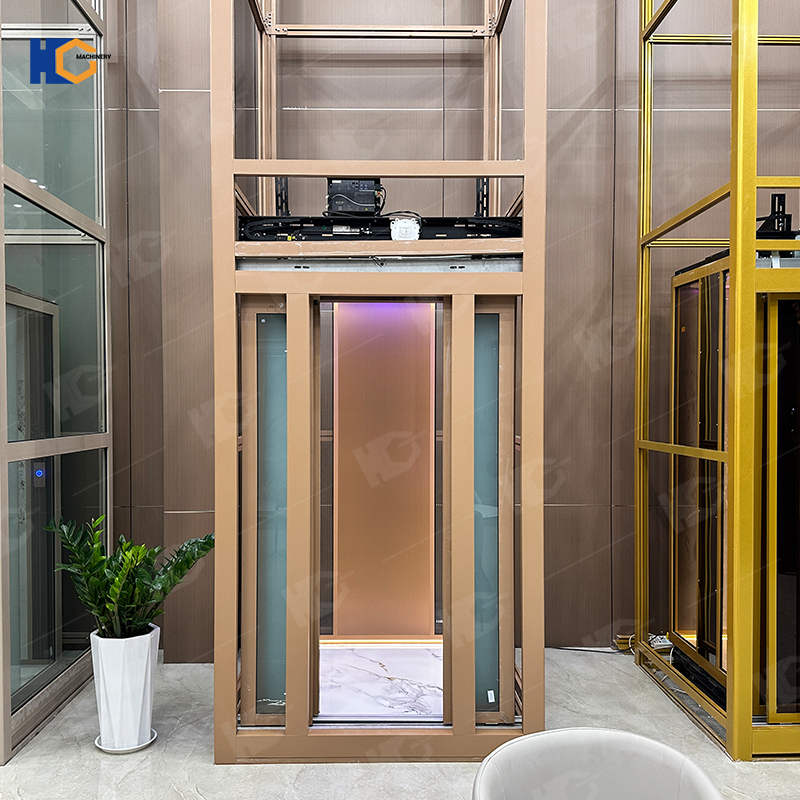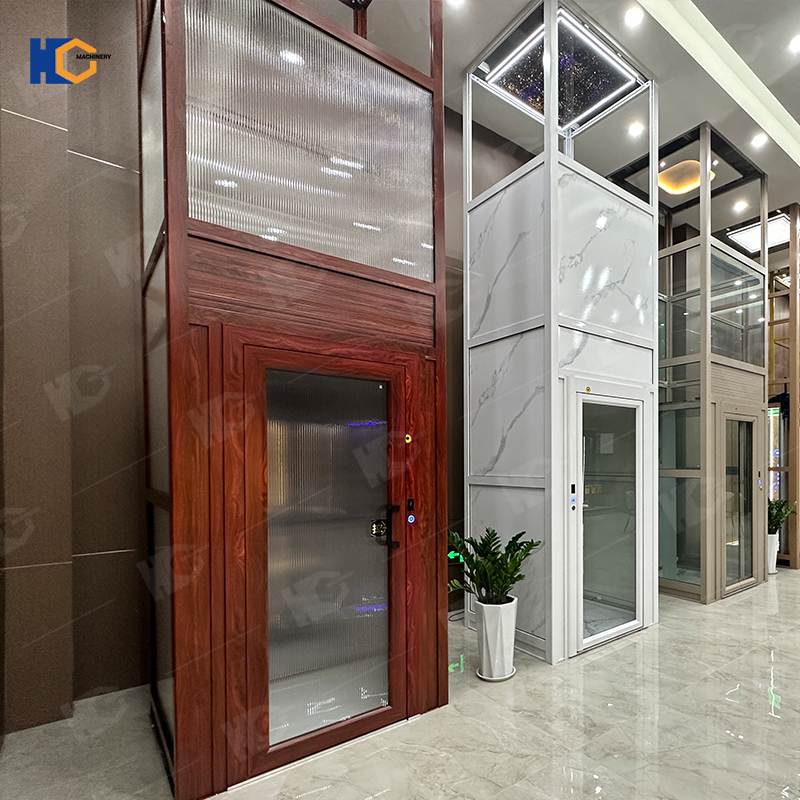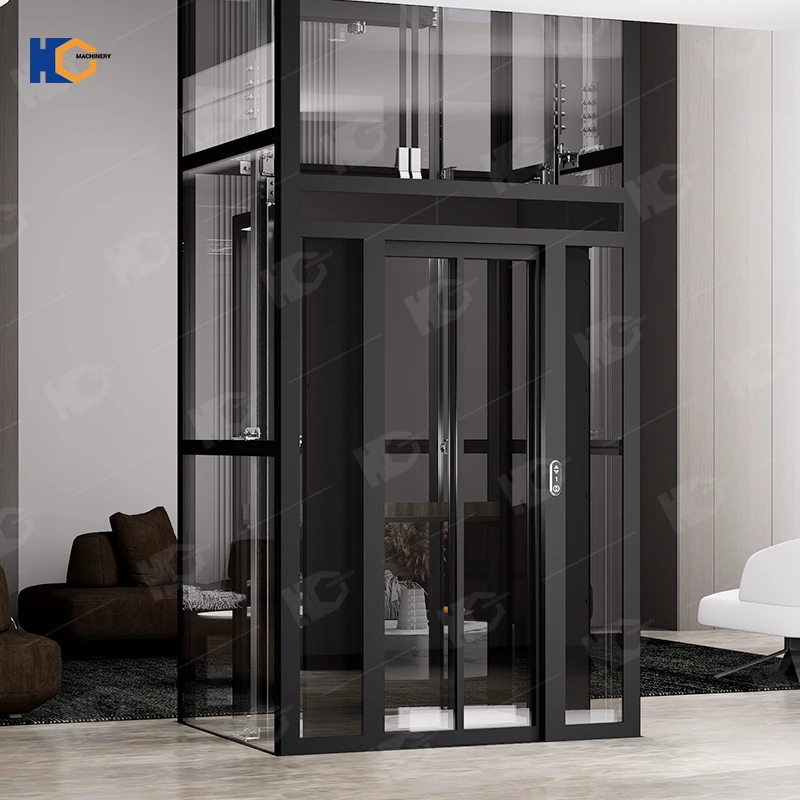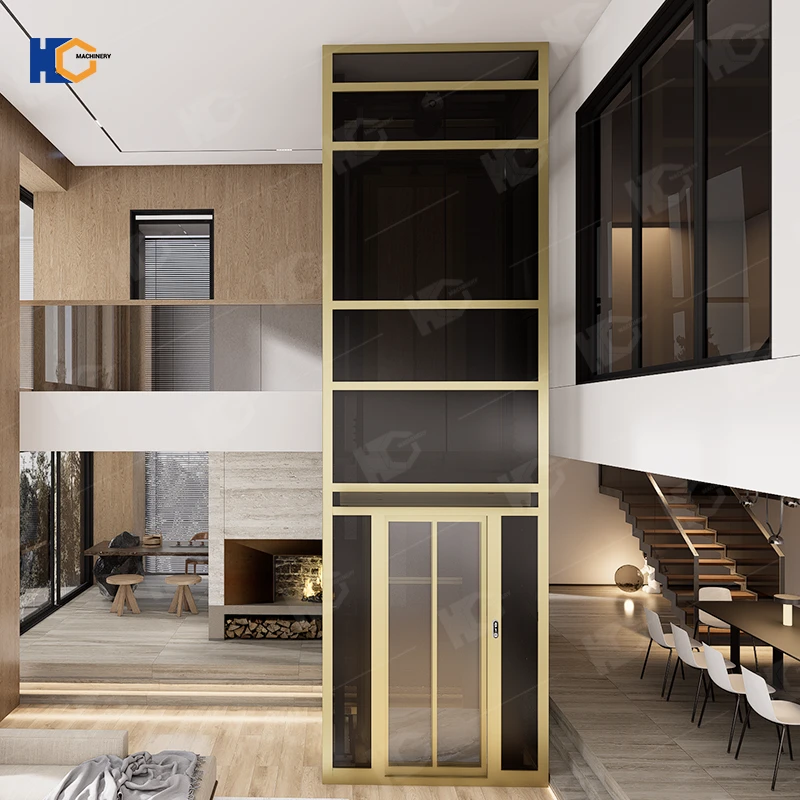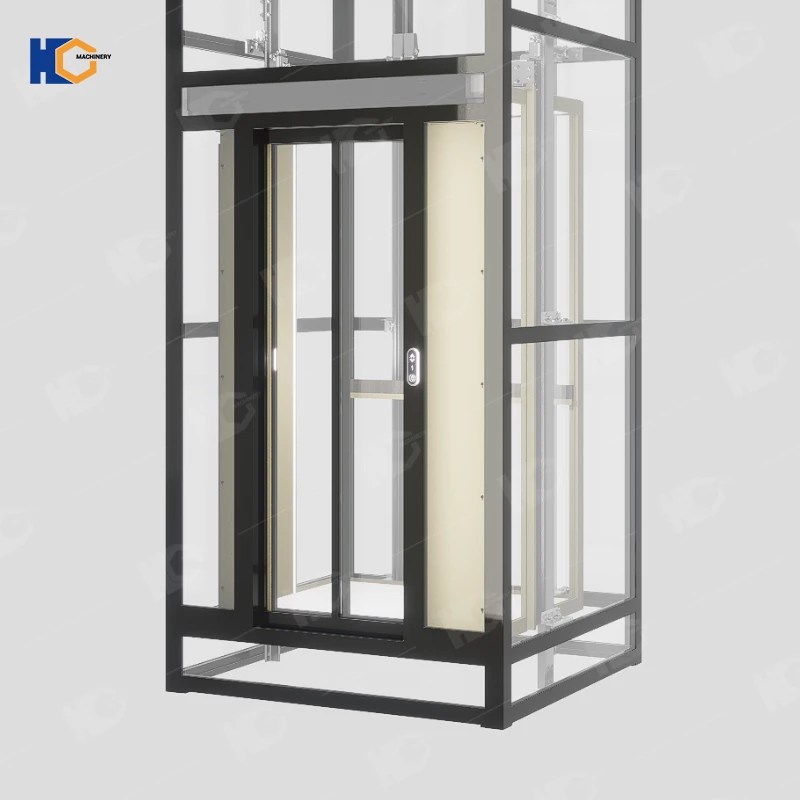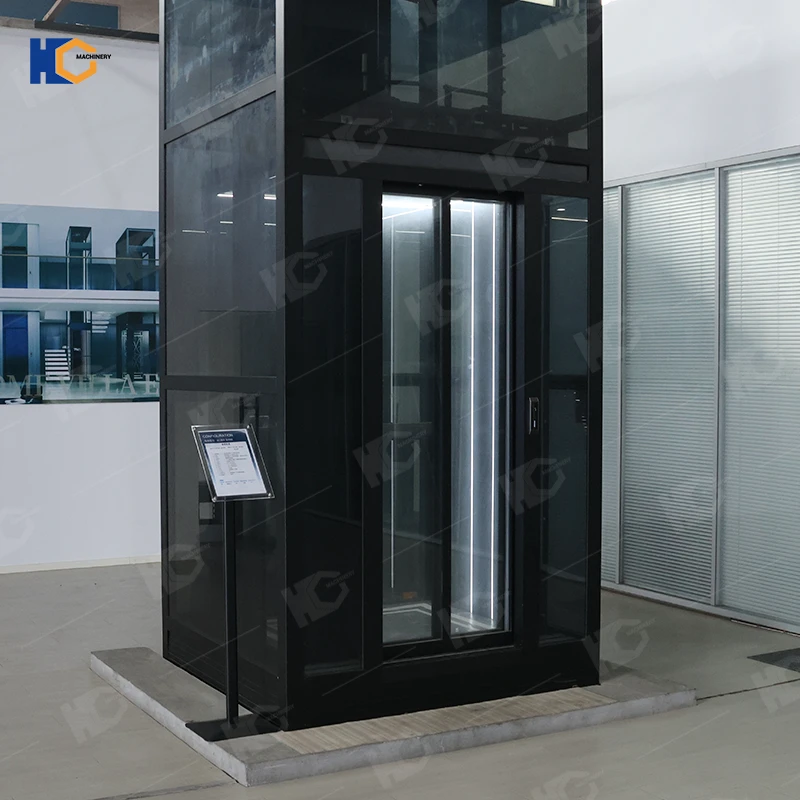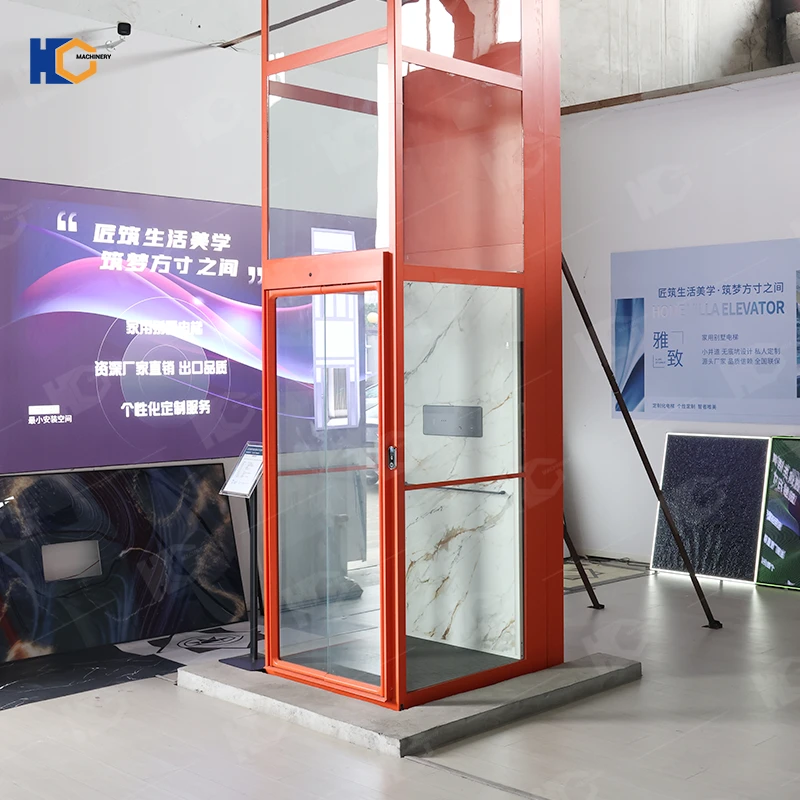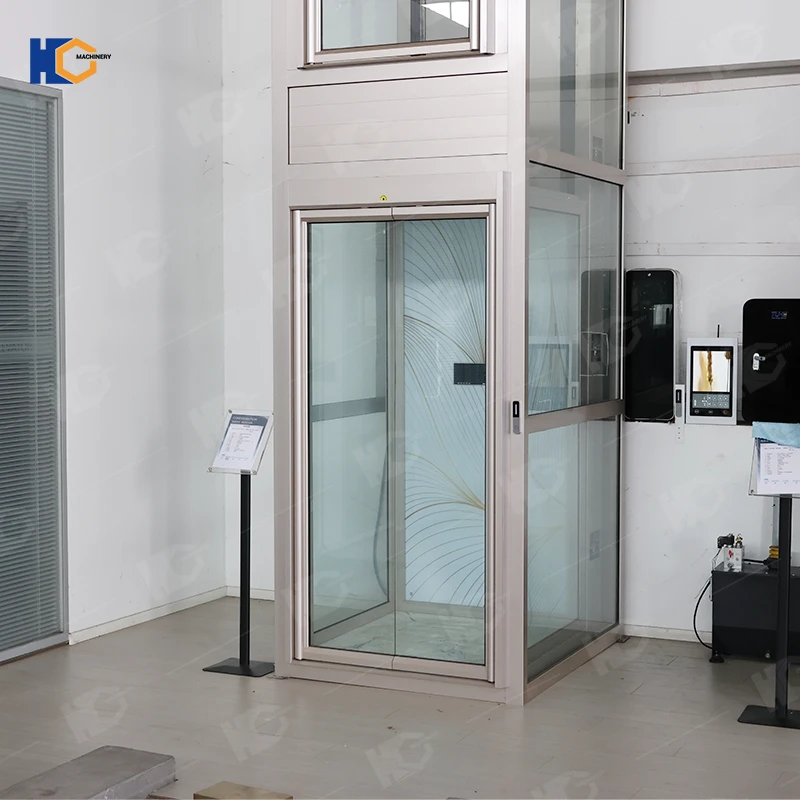If you are considering installing a small home elevator for your villa, townhouse, or multi-story residence, a 4 person elevator is one of the most practical and space-efficient options. In this guide, we will explain what a 4 person elevator is, the typical lift size for this capacity, provide a China factory price table in USD, and list everything you need to know before installation—so you can be well-prepared and make an informed decision.
What is a 4 Person Elevator?
A 4 person elevator typically has a rated load capacity of 300–400 kg (660–880 lbs), designed to carry 3–4 average adults at the same time. For compact home passenger lifts, manufacturers often use 300 kg (about 4 persons) as the standard capacity. These elevators can be hydraulic, traction (gear or gearless), permanent magnet synchronous gearless, pneumatic/vacuum, or platform types, and they are widely used in private houses, villas, and as accessibility lifts for people with reduced mobility.
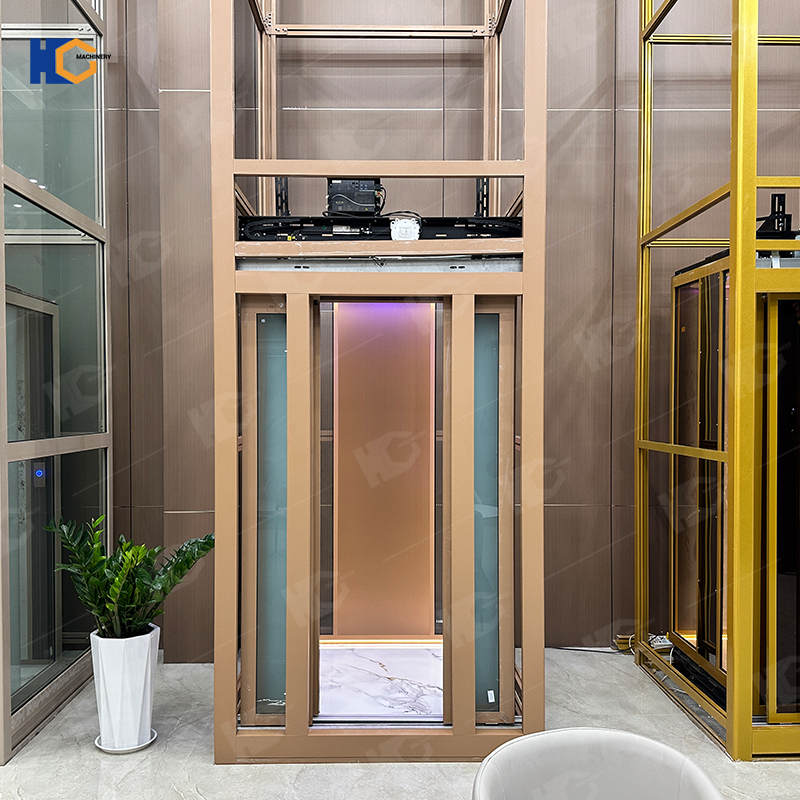
4 Person Lift Size – Cabin, Shaft, and Clearance Requirements
Exact dimensions vary by manufacturer and model, but here are the most common specifications for a compact 4-person (≈300 kg) elevator:
Typical Cabin Internal Size: Around 900 mm (width) × 900–1,000 mm (depth) × ≥2,100–2,200 mm (height). A popular standard is 1000×1000×2100 mm, with some models going up to 1200×1000 mm for extra comfort.
Shaft / External Space Requirement: You will need to allow an additional 100–200 mm clearance on each side for the guide rails, wiring, and tolerances. That means the shaft internal dimension is usually 1.1 m × 1.1 m to 1.4 m × 1.2 m for this category.
Pit and Headroom:
Pit (below ground): 150–300 mm for traditional designs.
Headroom (top clearance): ≥2,400 mm from the top floor stop to the shaft ceiling.
New “pitless” or “machine-room-less” models (like vacuum lifts or self-supporting hydraulic lifts) can reduce or eliminate these requirements, making them suitable for retrofits.
Tip: If your home has very limited space, a 900×900–1000×1000 mm cabin, 300 kg capacity is a good fit. For wheelchair or stretcher access, choose 1000×1200 mm, 350–400 kg.
China Factory Reference Prices (in USD) – Model & Configuration
The table below lists common 4 person home lift types, their typical load, common cabin sizes, and factory reference prices from Chinese manufacturers (FOB or factory price, USD). These prices are for reference only—actual costs depend on customization, certifications, accessories, shipping, and installation.
| Product Type | Typical Load / Persons | Common Cabin Size (mm) | China Factory Price (USD) | Notes |
|---|---|---|---|---|
| Platform-type, machine-room-less home lift (simple vertical platform) | 250–350 kg (3–4 persons) | 900×900 / 1000×1000 | $2,000 – $3,500 | Basic platform lift, suitable for short travel, often used for accessibility. |
| Small hydraulic/traction home elevator (economy model) | 300–400 kg (4 persons) | 900×1000 / 1000×1000 | $5,000 – $11,000 | Standard home cabin, includes basic decoration and control cabinet. |
| Mid- to high-end villa / panoramic glass lift | 300–630 kg (4–6 persons) | 1000×1200+ | $9,000 – $33,000+ | Premium finishes, full-glass design, higher load. |
| Pneumatic/vacuum home lift (no shaft/pit) | 200–300 kg (2–4 persons) | Ø 760–1240 mm | $8,000 – $28,000 | Easy to retrofit in existing homes, higher unit price. |
Important Notes:
Low-end ($2k–$4k) models are usually very basic and may exclude installation, packaging, or certification.
Mid-range ($5k–$15k) is the most common “complete home elevator” range from Chinese factories.
High-end ($20k+) includes luxury decor, glass cabins, and imported drive systems.
Always confirm what’s included—machine room, doors, door operators, control panels, installation, commissioning, training, and warranty.
Cost Breakdown – Full Budget View
To help you estimate the total cost of ownership, here’s how a typical 4 person home elevator budget is divided:
Equipment (Factory Price, China): $3,000 – $12,000
International Shipping & Customs: $800 – $3,500
Local Transportation & Handling: $200 – $1,500
Civil Works (shaft, pit, openings, reinforcement): $1,000 – $8,000
Installation & Commissioning: $1,000 – $6,000
Certification / Inspection: $200 – $2,000
After-sales Service & Maintenance: $200 – $1,200/year
Example Total (equipment + shipping + installation + civil works): $6,000 – $30,000+ depending on the model and complexity of building modification.
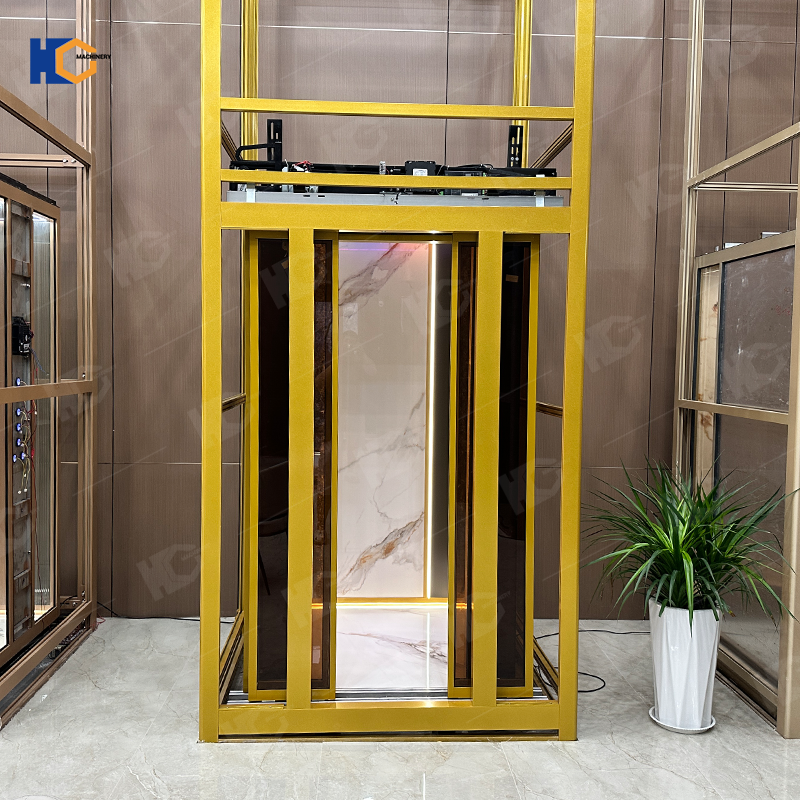
What You Need to Know Before Installing a Home Lift (Checklist + Advice)
1. Pre-planning
Define your needs – Is it mainly for elderly mobility, daily passenger use, or moving large items? This affects load, cabin size, and door type.
Measure available space – Floor opening size, floor-to-floor height, top clearance, and pit possibility.
Check structural strength – Consult a structural engineer to see if reinforcement is needed.
Power supply – Confirm available voltage and phase (commonly 220–380V, single/three phase).
Set budget & timeline – Include equipment, installation, and building works.
2. Model Selection & Procurement
Choose drive type – Hydraulic (smooth, needs pump), traction (energy-efficient, high floors), pneumatic/vacuum (no pit), platform (low cost).
Confirm inclusions – Written confirmation of whether doors, operators, control cabinets, decoration, installation, testing, training, and warranty are included.
Check certifications – CE, ISO, TUV, or Chinese GB standards.
Inspect samples or videos – Request installation videos and case studies.
Negotiate MOQ & discounts – For multiple units, secure lower prices and extended warranty.
3. Construction Stage
Civil works first – Shaft, pit, openings, and reinforcement before installing rails and cabin.
Verify dimensions – Shaft size, door opening height, alignment (tolerance ≤ 5 mm).
Ensure safety devices – Brakes, overspeed governor, overload protection, buffers, emergency light/phone, UPS/manual lowering.
Documentation – Obtain factory certificate, assembly drawings, test reports, wiring diagrams, and manuals.
4. Acceptance & Long-term Operation
Third-party inspection – By a licensed local authority or elevator inspector.
Maintenance contract – Define response times and service scope after the warranty period.
User training – For safe operation and emergency handling.
Emergency plan – Clear procedure and contact numbers for breakdowns.
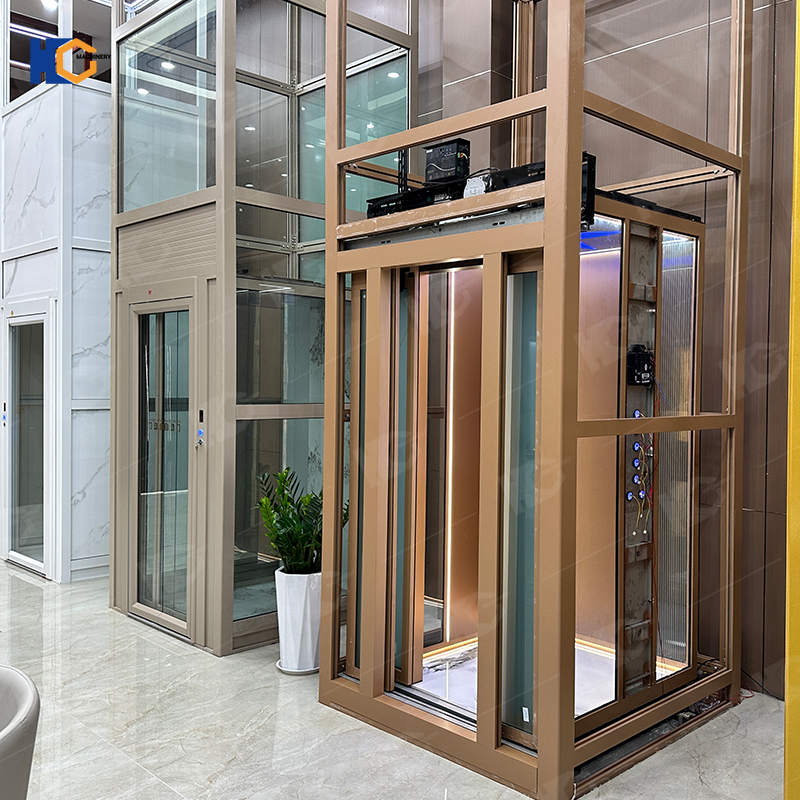
Six Quick Tips for Buyers
Measure before choosing – Record shaft, pit, headroom, and door width before selecting a model.
Clarify what’s included – Low prices often mean missing key components or services.
Choose pitless/machine-room-less for retrofits – Though more expensive, they save on construction.
List civil works separately – Many overlook this, doubling the final cost.
Ask for at least 12 months warranty – And 2 years for key parts, with service response time in writing.
Compare at least 3 suppliers – Ask for real project contacts to verify.
Summary
On a budget: Consider platform or economy models ($2k–$6k equipment), but expect $6k–$12k installed.
For comfort & aesthetics: Mid- to high-end traction or glass lifts ($9k+ equipment), with total cost often $20k–$30k+.
For tight spaces/retrofits: Pneumatic/vacuum or pitless solutions cost more upfront but save on building modifications.
If you like, I can prepare next:
A list of 3 suitable Chinese factory models based on your house’s actual dimensions, with pros & cons.
A ready-to-send inquiry template (English/Chinese) covering all key questions, required certifications, installation terms, and acceptance criteria.
Do you want me to prepare the factory inquiry template so you can start contacting Chinese suppliers right away? That would ensure you get accurate quotes and avoid hidden costs.
